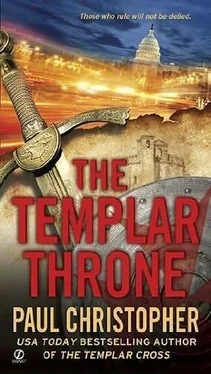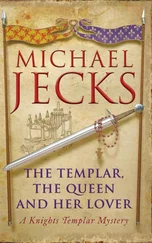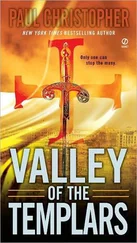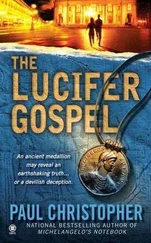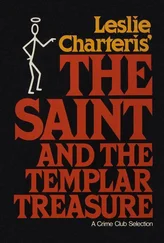Paul Christopher - The Templar throne
Здесь есть возможность читать онлайн «Paul Christopher - The Templar throne» весь текст электронной книги совершенно бесплатно (целиком полную версию без сокращений). В некоторых случаях можно слушать аудио, скачать через торрент в формате fb2 и присутствует краткое содержание. Жанр: Триллер, на английском языке. Описание произведения, (предисловие) а так же отзывы посетителей доступны на портале библиотеки ЛибКат.
- Название:The Templar throne
- Автор:
- Жанр:
- Год:неизвестен
- ISBN:нет данных
- Рейтинг книги:4 / 5. Голосов: 1
-
Избранное:Добавить в избранное
- Отзывы:
-
Ваша оценка:
- 80
- 1
- 2
- 3
- 4
- 5
The Templar throne: краткое содержание, описание и аннотация
Предлагаем к чтению аннотацию, описание, краткое содержание или предисловие (зависит от того, что написал сам автор книги «The Templar throne»). Если вы не нашли необходимую информацию о книге — напишите в комментариях, мы постараемся отыскать её.
The Templar throne — читать онлайн бесплатно полную книгу (весь текст) целиком
Ниже представлен текст книги, разбитый по страницам. Система сохранения места последней прочитанной страницы, позволяет с удобством читать онлайн бесплатно книгу «The Templar throne», без необходимости каждый раз заново искать на чём Вы остановились. Поставьте закладку, и сможете в любой момент перейти на страницу, на которой закончили чтение.
Интервал:
Закладка:
"What were they for?" Meg asked. "The marks, I mean."
"Every master mason had a different mark," the minister explained. "Each block they laid was given the mark for payment. Sometimes they were also used for decoration or to show later masons who had come before them. They were used a great deal in Freemasonry, as well. Follow me and I'll show you some I took yesterday. It's quite a lot of fun, actually."
The minister trotted off to the front of the refectory, where a large crucifix stood against the wall. Below the crucifix a table had been constructed, a door laid across two sawhorses. They followed and he showed them at least a hundred more of the obscure marks, graffiti from almost a thousand years ago. Suddenly Holliday froze.
"That one," he said, pointing. "Where did it come from?"
"That? Yes, it is a little odd. The first time I've seen one like it, as a matter of a fact."
"It's the only one in the church?" Holliday asked.
"As far as I know," said Walker. "What's the matter, young man? You look white as a sheet."
Holliday almost laughed. It had been a long time since he'd been called young man.
"I've seen a ghost," he said, smiling faintly. The little blob of bright red flex-dough bore the mark of Saint-Clair-an engrailed cross. It was unmistakable. "The cross, where did you find it?"
"In the undercroft," answered Reverend Walker.
"What's the undercroft?" Holliday asked.
"A crypt if it's beneath a church, a basement storage area anywhere else," explained Meg.
"Quite right, my dear," said Walker, impressed.
"And here?" Holliday asked.
"The refectory was once the abbey dining hall. Originally the undercroft was the kitchen. Eventually the undercroft was used as a crypt, as your friend said," replied Walker. "I took that impression from directly above one of the old burial slabs."
"A knight?" Meg asked quickly.
"Good Lord!" Walker said. "How on earth did you know that?"
Meg slipped off her backpack, dug into it and pulled out the little book of prayers she'd purchased in Wicklow. She flipped through the pages until she came to the prayer she wanted, then began to recite: Lord God, in Jerusalem's temple crowned, We your steadfast soldier and your handmaiden ask Only for thy grace and favor found If as thy servants we complete the task. Save us from Satan's royal vengeance once more And give us Mary's holy wings to fly Us to the farther sable shore Then we shall keep thy treasures safe In Arcadia's pale enclosing arms once more.
"Astounding," said Walker. "The Knight's Prayer. Just about the oldest recorded prayer from the abbey."
"From 1307, to be precise," said Holliday.
"Curiouser and curiouser," muttered Walker, staring closely at them. "How could you possibly know when the prayer was written? Even I don't know that."
"Because we know who the 'steadfast soldier' and the 'handmaiden' were and we know exactly when they came here and why," said Holliday. "Now, please show us where you found that particular Mason's Mark."
19
The refectory undercroft was a long, low-ceilinged chamber supported by a series of four heavy stone pillars down the center. There were stairs at the east end and a small root cellar at the west end. In between the steps and the root cellar twenty stone burial slabs were laid against the north wall, their upper surfaces all but worn off. A brass rubbing in white against black hung on the wall above each slab.
Walker, Holliday and Sister Meg walked along the aisle formed between the slabs and the pillars, Holliday carefully checking the brass rubbings. At the ninth slab he stopped and stared at the rubbing.
"This is the one," he said.
"How do you know?" Walker asked, fascinated by the story he'd been told.
"The shield is quartered," said Holliday, pointing to the faint image on the rubbing. "In the upper left you have Saint-Clair's engrailed cross, in the upper right you have the image of a Venetian ship with a lateen sail, and in the bottom quadrant you have two crescents, both facing inward. If it was in color the two crescents would probably be green-islands."
"Fanciful, but how do you know they're islands? They could just as easily signify moons, or even Arabic crescents."
"The poem," said Meg, suddenly seeing it the way Holliday did. "And give us Mary's holy wings to fly us to the farther sable shore," she quoted. "The farther shore-the other side of the Atlantic."
"And sable?" Walker asked.
"According to the book the poems were originally written in Gaelic-all except the Knight's Prayer. That was written in French," said Holliday.
"That's right. French was the language of chivalry. Most of the aristocracy spoke it in medieval times," said Walker, still looking a little bewildered.
"In French 'sable' means sand, as in a beach," added Meg.
"Well, that's all fine and good," argued Walker. "That makes your quest quite simple then, doesn't it. Just find a sandy beach somewhere on the east coast of North America, that's all."
"The whole prayer was written as a code," said Holliday. "The answer's in there somewhere."
"Oh, dear," the rotund minister said and sighed. "Must everything be in some sort of code? It's all a bit much, don't you think? Illuminati, the Masons, Opus Dei. Why is it that everybody sees religious conspiracies everywhere these days?" The minister shook his head. "Nobody cares that much for religion anymore, believe me."
"They did back in the fourteenth century," said Holliday. "You don't have to twist reality around to see the meaning of the prayer." Holliday took the book from Meg. "Satan's royal vengeance is King Philip of France killing the Templars. Mary's holy wings are the sails of the Santa Maria Maggiore, their ship, and Arcadia's pale enclosing arms almost certainly refers to Nova Scotia-new Scotland-in the Canadian maritimes, a place that was originally known as Arcadia. To top things off the inscription on Jean de Saint-Clair's tomb in the old chapel at Mont Saint- Michel on the Normandy coast of France reads In Arcadia Est."
"That's all very entertaining, but it still seems rather fanciful."
"It is rather fanciful," Holliday said. "Imaginative as hell."
"So you agree then, your coded message and a few old rubbings could amount to nothing."
"Of course," said Holliday, "but so far we've been led from Mont Saint- Michel to Prague, to the Venetian Archives, then to St. Michael's Mount, and finally to here by the same kind of fanciful clues. There's a pattern and a logic to it all."
"Coincidence," argued Walker.
"Maybe," said Holliday. "But I'm betting on Jean de Saint-Clair's imagination and the imagination of the Blessed Juliana. They were rescuing a treasure trove of relics, hiding them from a vengeful king and a power-hungry Pope. They wanted to get the relics as far away from both men as they possibly could, but they wanted to do it without starting a war.
"If King Philip had attacked St. Michael's Mount it would have been the perfect excuse for Edward the Second of England to attack his old rival. To have attacked Iona would have inflamed Scotland and incurred the wrath of the Irish, supposedly allies of the French as well as the not inconsiderable Scandinavian kingdoms.
"On the other hand, neither Jean de Saint-Clair nor Juliana knew when, or even if, they would be back to retrieve the treasures. They had to leave some sort of clues behind; clues that would outlive them for a very long time, perhaps hundreds of years. What better place than the burial ground of kings?" Holliday smiled. "The Knight's Prayer speaks for itself. It's survived for more than seven hundred years in much the same way as the Lord's Prayer has survived even longer."
The burly minister laughed heartily and clapped his hands.
Читать дальшеИнтервал:
Закладка:
Похожие книги на «The Templar throne»
Представляем Вашему вниманию похожие книги на «The Templar throne» списком для выбора. Мы отобрали схожую по названию и смыслу литературу в надежде предоставить читателям больше вариантов отыскать новые, интересные, ещё непрочитанные произведения.
Обсуждение, отзывы о книге «The Templar throne» и просто собственные мнения читателей. Оставьте ваши комментарии, напишите, что Вы думаете о произведении, его смысле или главных героях. Укажите что конкретно понравилось, а что нет, и почему Вы так считаете.
